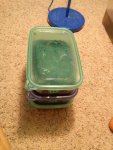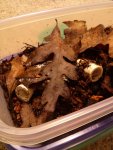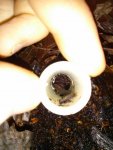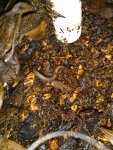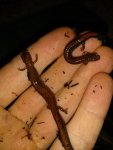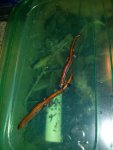JMH
Member
- Joined
- May 28, 2011
- Messages
- 71
- Reaction score
- 4
- Points
- 8
- Location
- Illinois
- Country
- United States
- Display Name
- JMH
Hey guys, I just recently found 3.3 (very likely) P. serratus. I decided to set them up in individual pairs. Each pair is in a 76 oz container with a 60:40 ABG:leaf litter substrate and a few 2-3 inch long PVC pieces buried into the substrate.
I was just interested in seeing how others keep them and in what ratios. Also any breeding tips would be great.
Thanks!
I was just interested in seeing how others keep them and in what ratios. Also any breeding tips would be great.
Thanks!

